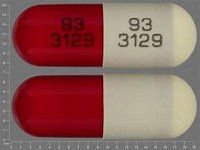Lidocaine

Lidocaine
CLINICAL USE
Local anaesthetic Ventricular arrhythmias
DOSE IN NORMAL RENAL FUNCTION
Local anaesthetic: usually 1 or 2% solutions used, according to patient’s weight and procedureVentricular arrhythmias; 100 mg as a bolus in patients without gross circulatory impairment (50 mg in lighter patients or in severely impaired circulation), followed by an infusion of 4 mg/min for 30 minutes, 2 mg/min for 2 hours, then 1 mg/min or according to local policy
PHARMACOKINETICS
Molecular weight :288.8 %Protein binding :66 %Excreted unchanged in urine : <10 : Volume of distribution (L/kg) :1.3half-life – normal/ESRD (hrs) :1–2/1.3–3 DOSE IN RENAL IMPAIRMENT
GFR (mL/MIN)
20 to 50 : Dose as in normal renal function 10 to 20 : Dose as in normal renal function <10 : Dose as in normal renal function DOSE IN PATIENTS UNDERGOING RENAL REPLACEMENT THERAPIES
CAPD :Unlikely to be dialysed. Dose as in normal renal function HD :Not dialysed. Dose as in normal renal functionHDF/high flux :Unknown dialysability. Dose as in normal renal functionCAV/VVHD :Not dialysed. Dose as in normal renal function IMPORTANT DRUG INTERACTIONS
Potentially hazardous interactions with other drugsAnti-arrhythmics: increased risk of myocardial depressionAntibacterials: increased risk of ventricular arrhythmias with quinupristin/dalfopristinAntipsychotics: increased risk of ventricular arrhythmias with antipsychotics that prolong the QT intervalAntivirals: concentration possibly increased by amprenavir, atazanavir, darunavir and lopinavir – avoid concomitant use with amprenavir and darunavirBeta-blockers: increased risk of myocardial depression; increased risk of lidocaine toxicity with propranolol Diuretics: effects antagonised by hypokalaemiaDolasetron and tropisetron: increased risk of ventricular arrhythmias – avoid concomitant use Ulcer-healing drugs: concentration increased by cimetidine, increased toxicity ADMINISTRATION
Reconstition
– Route
IV, SC, topical Rate of Administration
According to dose Comments
Usually 1–2 mg/mL in glucose 5% Minimum volume 8–20 mg/mL but watch for extravasation. (UK Critical Care Group, Minimum Infusion Volumes for fluid restricted critically ill patients, 3rd Edition, 2006 OTHER INFORMATION
IV injection lasts for only 15–20 minutes
See how to identify renal failure stages according to GFR calculation
See how to diagnose irreversible renal disease
Home









